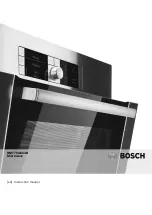
15
OZG_497-BA-e-1510
5.7 Lighting control
A main switches fitted on the left rear of the stand basis ensures that the device will
be supplied with power when the plug is connected.
As far as the goose neck is attached, the light source, originally intended for the
transmitted lighting, provides also the incident lighting.
You can control the light intensity of these two lightings by turning the dimmer wheel
on the right-hand side of the rear of the stand base in a particular direction.
The front light must be treated separately to the reflected and transmitted light, due to
the way it is controlled.
Indeed it also only operates if the mains switch is switched on, but it also has its
switch on its housing which can be used to switch it on and off.
It is not connected to the dimmer wheel and does not have one of its own.
So the light intensity does not vary at all.
However, the advantage of the front light is that it can be adjusted to various
positions because of its hinged arm bracket.
The transmitted lighting is in addition standardly equipped with a dark field unit. This
is absolutely necessary for gemology applications and includes two more elements,
which also can be used for controlling the lighting.
Firstly it includes an iris diaphragm, which can be operated with by a metal lever
attached to the aperture of the transmitted lighting. That serves the purpose of a field
diaphragm.
Secondly it includes a cover plate for the transmitted lighting. By turning a knob
(mounted on the working stage nearby the stand column) you can choose between
common transmitted lighting method (cover open) and dark field method (cover
closed).
Summary of Contents for OZG 497
Page 2: ......
Page 7: ...OZG_497 BA e 1510 6 2 Nomenclature...




































